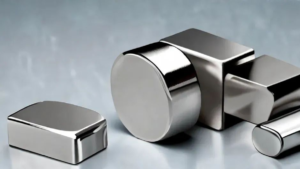


There are regular magnets, and then there are rare earth magnets. If you’re unsure what the difference is or whether you need a rare earth magnet versus a regular magnet, you’ve come to the right place. This guide will tell you everything you could need to know about rare earth magnets, including their materials, uses and how to get them.
A magnet is a material that produces a magnetic field capable of attracting or repelling ferromagnetic materials. Rare earth magnets are made from one of the 17 rare earth metals on the periodic table. They are an example of permanent magnets, meaning they don’t lose their magnetic properties.
The term “rare earth” is misleading, as the metals used to produce the magnets aren’t in limited supply. They are found throughout the Earth’s crust. The most common rare earth metals are available in concentrations that rival “common” metals such as zinc and copper.
The term “rare earth” comes from the fact that rare earth metals are typically found in combination with other elements. It can be challenging to mine the metals since the extraction process is complex and expensive.

The metals used to produce rare earth magnets are found worldwide, but some areas produce more rare earth metals than others. The United States, Japan and Australia produce notable amounts of rare earth metals.
The materials that make up rare earth magnets come from the Lanthanide group of elements on the periodic table.
While there are 17 types of rare earth elements, two types of magnets are more popular than the others: samarium cobalt (SmCo) and neodymium (Nd-Fe-B).
SmCo was the first type of rare earth magnet to be developed. It combines samarium, a rare earth element, with cobalt, a transition metal. Neodymium magnets were developed later. They feature a combination of three metals — the rare earth metal neodymium combined with iron and boron. Most of today’s rare earth magnets are made from Nd-Fe-B.
A magnet maker’s exact formula to produce rare earth magnets depends on the magnet’s grade or strength. However, the magnet-making process typically has several common steps, no matter the magnet’s final strength.
First, the metals are mined from the earth. They are then ground into a powder and mixed, based on the magnet type. The powdered metals are then pressed into a mold to shape the magnet. Magnetic energy gets applied to the mold, which aligns the particles within.
After that, the powdered metals are heated in a process called sintering. Sintering fuses the powdered metals. The metal is then cooled before it’s cut into shapes.
Finally, the metal alloys are cleaned and coated before getting remagnetized again.
Rare earth magnets have many applications in daily life. They are commonly used in computer equipment, such as hard drives, and medical equipment, such as MRI machines. They help power the motors of electric cars and wind turbines, too. Other common uses include toys, credit cards and speakers.
You can use rare earth magnets at home in craft projects or to close packages. They can also form the basis of magnetic door locks.
The primary metal found in “regular” magnets is iron. Nickel, zinc, barium or manganese may also be used in a standard magnet. Aside from the materials, there are several other differences between rare earth magnets and regular magnets:
Rochester Magnet has neodymium and samarium cobalt rare earth magnets available. You can use our rare earth magnets in various applications, and we’ll help you select the specifications and grades most appropriate for your needs. Depending on your project, we can special order magnets for you and have them available in weeks rather than months. Contact us today to learn more and get a quote.

Magnetic sheeting is a flexible material that can be magnetized on one side and often has an adhesive or printable surface on the other. It

Magnets come in various shapes and sizes, each designed for specific uses. Understanding the different shapes of magnets, their properties, and their applications can help

Magnets are a fascinating part of our everyday lives, from the magnets on our fridge doors to the powerful magnets used in advanced technology. There
Our magnet experts will help you get exactly what you need – custom or stock – in record time with great quality at a very competitive price.
Ⓒ 2024 - All Rights Are Reserved